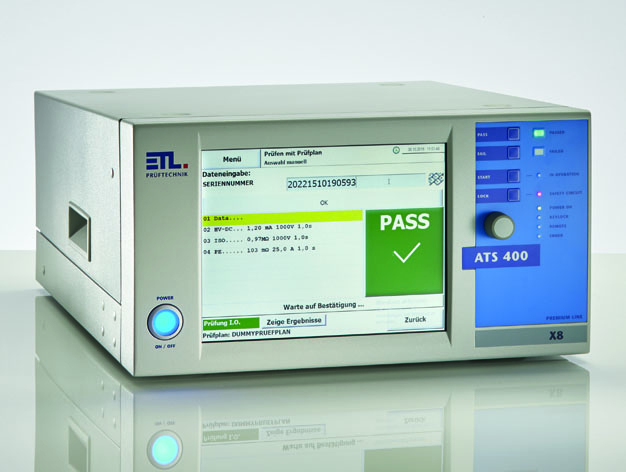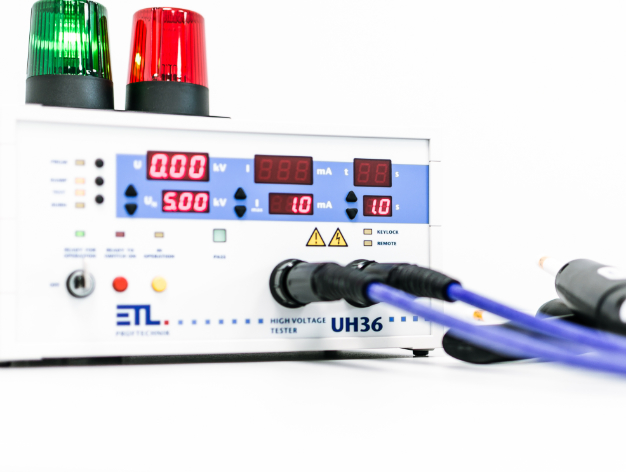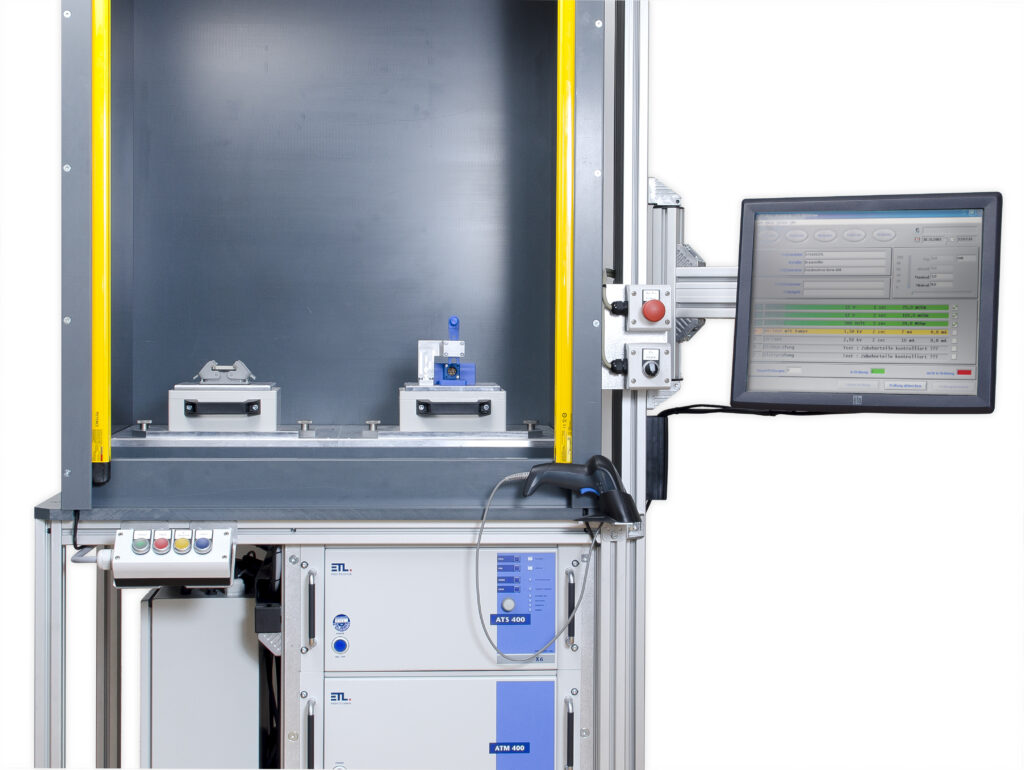Protective Conductor Test Device
Protective Conductor Test Device ETL Series ATS400 / Series RS36
The ETL protective conductor test devices deliver a maximum output current of 200A and measure protective conductor resistances up to 1000mOhm. The protective conductor test is applied to devices of protection class I. It is checked whether the protective conductor resistance is below a limit value defined in the standards.
Protective Conductor Test Device
Protective Conductor Test Device ETL Series ATS400 / Series RS36
The ETL protective conductor test devices deliver a maximum output current of 200A and measure protective conductor resistances up to 1000mOhm. The protective conductor test is applied to devices of protection class I. It is checked whether the protective conductor resistance is below a limit value defined in the standards.
WHAT IS AN PE – PROTECTIVE CONDUCTOR TEST?

The protective conductor test ensures that the protective conductor of an electrical device functions properly. The protective conductor is a connection that serves to connect electrical devices to the ground, thus providing a safe path for electrical currents to dissipate. During the protective conductor test, the resistance of the protective conductor is measured to ensure that it is low enough to provide an adequate current path to the ground in the event of a fault or short circuit. Proper protective conductor testing is crucial to ensure the safety of individuals using the electrical device, as it protects against electric shocks and reduces the risk of electrical accidents.
Request your inquiry now
quickly and effortlessly!
HOW IS A PROTECTIVE CONDUCTOR TEST CONDUCTED?
The electrical protective conductor test is carried out to ensure that the protective conductor of an electrical device functions properly and provides a secure current path. Here are the steps to conduct a protective conductor test:
- Preparation:
Ensure that the device is turned off and disconnected from the power supply. Also, check that the testing device is functioning properly and calibrated. - Connection of the Testing Device:
Connect the testing device to the protective conductor terminal of the device. Ensure that the connection is tight and secure. - Resistance Measurement: Turn on the testing device and select the resistance measurement mode. Press the measurement button to measure the resistance of the protective conductor. The testing device displays the measured resistance value.
- Comparison with Limits: Compare the measured resistance value with the limits specified in standards or regulations. Typically, the resistance of the protective conductor should not exceed a certain value.
- Assessment of Results: If the measured resistance value is within the permissible limits, the protective conductor test is considered passed. If the value exceeds the limit, it may indicate a faulty connection or a defect in the protective conductor, requiring further investigation or repairs.
It is important to follow the specific instructions of the testing device manufacturer as well as the applicable standards and regulations to perform a correct and safe protective conductor test.

Request your inquiry now
quickly and effortlessly!
PE – PROTECTIVE CONDUCTOR TESTING WITH ETL TEST EQUIPMENT
ETL-Technologies_GmbH: Your specialist for protective conductor testing
Protective conductor testing is an indispensable procedure in electrical engineering to ensure the safety and functionality of electrical installations. At ETL-Technologies_GmbH, we understand the importance of this testing and provide professionals with the necessary tools and expertise for reliable protective conductor testing.
What is a protective conductor test?
The protective conductor test is conducted to check the effectiveness of the protective conductor (grounding) in electrical installations. This protective conductor is crucial to provide a safe path to the ground in the event of a fault current, thus protecting individuals from electric shocks. The test ensures that the protective conductor is properly installed and functions correctly when needed. A faulty protective conductor can pose serious safety risks, making regular checks of utmost importance.
Conducting the protective conductor test: A guide
Preparation: Before conducting the protective conductor test, it must be ensured that the system to be tested is de-energized and safely accessible.
Connection of the test equipment: Use test equipment specifically designed for protective conductor testing from ETL-Technologies. Establish a secure connection between the test equipment and the protective conductor of the installation.
Performing the measurement: The test involves measuring the resistance of the protective conductor. Low resistance values indicate good grounding and effective protective earthing.
Evaluation of results: After the measurement, the results are evaluated to determine whether the protective conductor complies with standards and safety requirements.
Protective conductor testing is not only a requirement according to safety standards but also a central element in electrical safety management. By providing advanced testing equipment and expertise, ETL Technologies GmbH assists professionals in effectively and safely conducting this crucial test.
With our help, electrical professionals can ensure that electrical installations are operated safely and in compliance with standards.
Request your inquiry now
quickly and effortlessly!
REQUEST NOW!
Click here to get to the testing device in two minutes – fast, easy, and without obligation.
Answer questions, provide contact details, and you’re done!
We will definitely get in touch with you.



